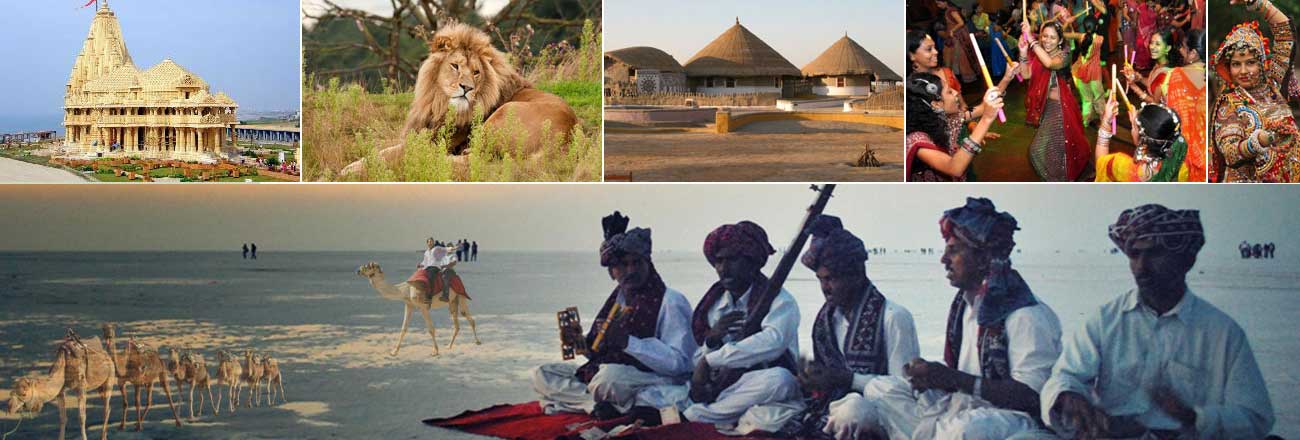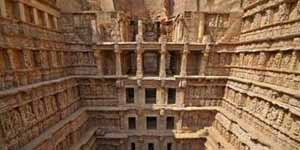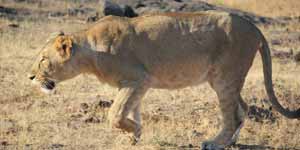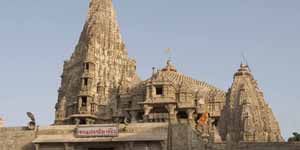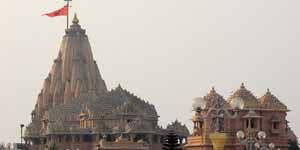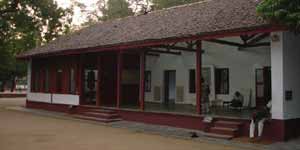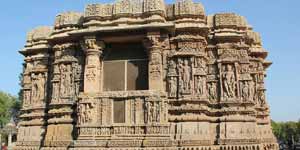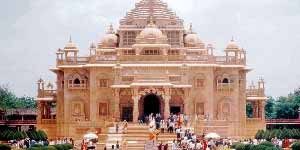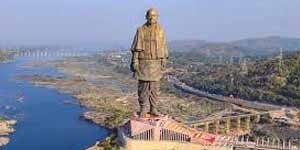
Statue of Unity
The Statue of Unity is an iconic 182 meters tall tribute to one of India’s foremost Statesmen and leaders – Sardar Vallabhbhai Patel. The monument is under construction and located between the Vindhyachal and Satpuda ranges, rising on Sadhu-Bet Island in the Narmada River, approximately 3.5 kms downstream from the famous Sardar Sarovar Dam in Gujarat. With the opening of the Statue of Unity, dedicated to the ‘Iron Man of India’, Sardar Vallabhbhai Patel, India just made its entry into the club of the tallest statues in the world.
Dedicated to one of India’s founding fathers, and the country’s first Deputy Prime Minister, Sardar Vallabhbhai Patel, the Statue of Unity, stands tall atop Sadhu Bet island on the Narmada facing the Sardar Sarovar Dam downstream in Kevadiya colony, about a 100 kilometres southeast of Vadodara.
Prime Minister Narendra Modi unveiled what is billed to be the world’s tallest statue at 182 metres, leaving China’s Spring Temple Buddha at 153 metre, a long way behind. The project was handed over to Larsen & Tubro at a whopping 2,989 crore, who commenced construction on 31 October 2014. The idea was to inaugurate the Sardar Patel statue on his 143rd birth anniversary, on 31 October 2018. And as promised, the project was wrapped up in a period of 42 months with no escalation on fuel, labour and material. However, the Sardar Vallabhbhai Patel statue was first announced at a press conference by Narendra Modi on 7 October 2010 to commemorate his 10th year running as Gujarat’s chief minister.
As a part of an outreach programme to support the project, the state had asked Indian farmers to donate their used farming equipment in order to amass iron needed for the statue of Sardar Patel. Eventually, about 5000 tonnes of iron was believed to be collected, however, it wasn’t used for the statue as previously intended, and used instead in other work related to the construction of the structure.
Reason for building the Statue of Unity
Sardar Patel’s commitment towards the unification of the princely states for the formation of a consolidated Indian republic, and his tireless relief efforts for the refugees leaving Delhi and Punjab and integrating the British colonial provinces that were allocated to India, earned him the title “Unifier of India’. And it was in his memory, and as a mark of his contribution to a nation filled with diversities, the idea of the Statue of Unity took birth.
Design and Construction
The massive bronze Vallabhbhai statue produced at a foundry in China was designed by Indian sculptor, Ram Vanji Suthar, a Padma Bhushan and Padma Shri awardee for his contribution in the field of arts. In his 40 years of work life, he has created over 50 monumental sculptures. Speaking of the Patel statue, his son, Anil Suthar, also a sculptor, has described the pose - head up, a shawl clinging from the shoulder, and hands set on his side as if he is set to walk - portrays the true character of the person, his striving persona, and the unmistakable, iron will. After four years of work, the specifications of the structure stand at; height from the base is 240 metres, height of the base 58 metres, height of statue 182 metres.
Viewing Gallery and Museum
Of the five zones the statue is segregated into only three are open to public viewing. The first level entails the base going all the way to the statue’s shins, comprising a museum cataloging Sardar’s Patel’s contributions, and a memorial garden. Zone 2 goes up to the statue’s thighs at 149 metres. The viewing gallery, affording expansive views of the Narmada and the surrounding Satpura and Vindhyachal ranges, forms the third level. Zone 4 and 5 are the highest levels, and serve as the maintenance area.
How to Reach Statue of Unity
Statue of Unity address: Sardar Sarovar Dam, Kevadiya Village Narmada, Gujarat.
Statue of Unity Location
The statue of Sardar Patel is more than just a memorial, it is all set to become Gujarat, and perhaps even the country’s, significant tourist attraction. About a 100 kilometre from Vadodara, 200 kilometre from the capital Ahmedabad, and about 420 kilometre from Mumbai, the various ways to reach the site is by driving on State Highway 11 and 63. You will arrive into the nearest town of Kevadia in the Narmada district, and the statue is only 3.5 kilometres from there. Work is on to connect the statue site with a highway. From the mainland, you need to take a bridge to get to the statue, another plausible way is a ferry ride to the Sadhu Bet island where the statue is stationed.
Statue of Unity Nearest City
Rajpipla in the Narmada district is the nearest city to the Statue of Unity, about 25 kilometres away from Sardar Sarovar Dam.
Statue of Unity Nearest Airport
The Vadodara airport is about 90 kilometres away from the site. From the airport, you can hire a cab or use the state transport to get to the Sardar Vallabhbhai Patel statue.
Statue of Unity Nearest Railway Station
Vadodara railway station is the nearest rail head to the Sardar Patel statue. You can get on the public transport or book a cab to take you directly to the site.
Monuments in Gujarat
Monuments in Gujarat The words history, heritage, culture and traditions describe the true glory of Gujarat, one of India's very well-known and truly effervescent states. Each nook and corner of Gujarat, steeped in the past, bears witness to the richness and royal grandeur once enjoyed in this region. Today some of the most unique places that testify to the glorious days gone by are none but Gujarat 's timeless forts and monuments.Gujarat forts and monuments make up a very significant part of Gujarat's many types of tourist attractions. In reality it won't be an overstatement to say; Gujarat 's beauty has reached a unique height with these in the background. Modern buildings built in the middle of the old today appear to exemplify the idea of tradition and step forward in time bringing along old principles. The synthesis of old and modern has fooled every heart and mind with precision. In fact, this combination not only speaks of Gujarat's grandeur but also expresses some of India's sublime values, for which it is recognised throughout the world.
You will come across many fascinating details about them while visiting the forts and monuments in Gujarat on your trip to Gujarat. Not only do you enjoy the undying sagas associated with these sites but also the sophisticated architectural styles in which they boast. These sites gasconade's art work is the sight to feast your eyes on.
Looking closely at Gujarat forts and monuments, you can find that most of these sites exhibit a mixture of Hindu, Islamic and European architectural styles. The time of wooden furniture forming an important ingredient in these areas. You'll enjoy every bit of your tour to Gujarat forts and monuments, to state laconically.

